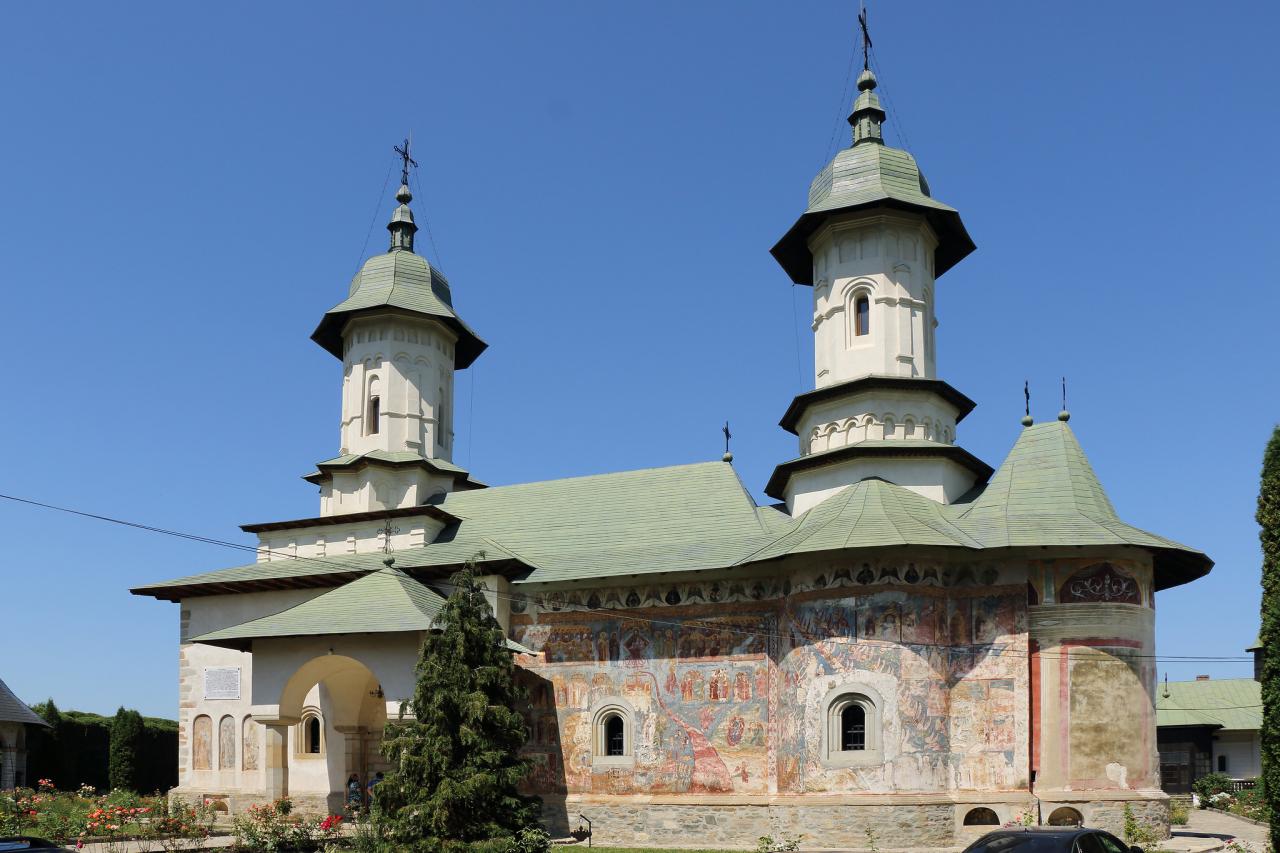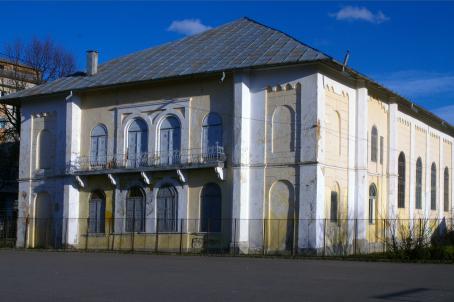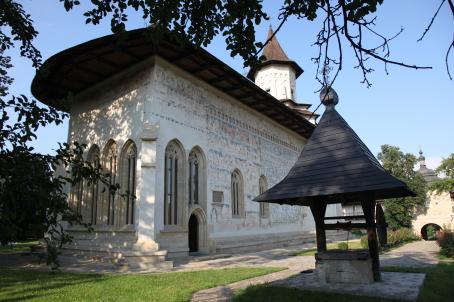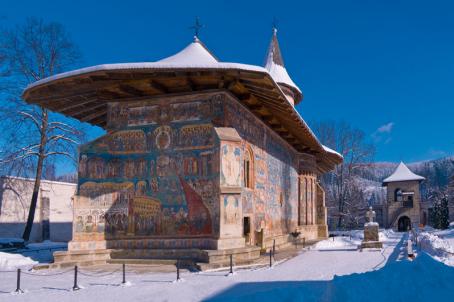Rasca Monastery
Rasca monastery is one of the famous painted monasteries of the Bucovina region due to the 16th-century frescos present on the exterior of its church. It was built between 1541 - 46 by Petru Rares, the prince of Moldavia. The Monastery suffered plundering by Turks and an earthquake in the 19th century, after which parts of it were renovated in a more contemporary style for the time.






